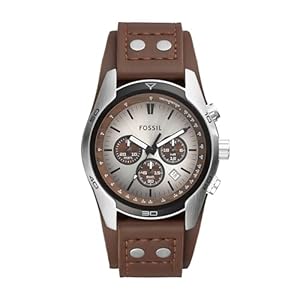David Ramsay was a famend Scottish watchmaker and clockmaker who was born within the late sixteenth century. Through the seventeenth century he was recognised as a distinguished determine on this planet of horology and appointed as the primary Grasp of the Worshipful Firm of Clockmakers and watchmaker to 2 Kings previous to the English Civil Struggle.
Born in Scotland, Made in London
David Ramsay was born round 1580 close to St. Andrews, within the county of Fife, Scotland and grew up as a part of a comparatively well-off household in a proudly Scottish family. He later moved to London, England, the place he gained recognition for his expertise in clockmaking. Ramsay was a mechanical genius and produced a number of the world’s most extraordinary horological masterpieces – clocks and watches which are arguably artworks unto themselves. Though he rose to the highest of his area as a watchmaker, working from the seat of energy in London, he struggled chronically with cash, finally falling out of royal favour and winding up in a debtors’ jail.
In 1594, he was apprenticed to the grasp armourer Henry Smith who was appointed Royal Armourer to King James VI of Scotland. Ramsay’s coaching in metalworking actually performed an important half in his later growth as a watch and clockmaker. This required specialist information and coaching, reminiscent of in hardening and tempering metal, and in smelting iron ore to acquire a extra uniform metal of upper high quality.
He would have additionally been skilled in high quality management, ending and engraving. These expertise would serve him properly within the manufacturing of probably the most troublesome a part of all in any clock or watch: the principle metal driving springs.
Usually, an apprenticeship was accomplished after seven years, after which the apprentice was allowed to take up a free citizenship to practise his commerce. Ramsay didn’t comply with the standard apprenticeship path and there’s no report of him working in Scotland. We all know he travelled to Paris in 1610. Though particulars are obscure, it’s identified that Ramsay met with the French king’s clockmaker, Denis Martinot to buy clocks to deliver them dwelling to Scotland. It’s believed that he spent three-years in Paris, and it’s cheap to surmise that he acquired some kind of coaching as a watchmaker while in Paris.
Though Ramsay is often considered a watchmaker, he additionally made clocks. One survives from this era, pre-dating Ramsay’s arrival in London. That is the ornately engraved gilt desk clock, now housed on the Victoria and Albert Museum (V&A) in South Kensington, London.
The motion of this spring-driven, placing desk clock has been extensively altered, in all probability within the late seventeenth century. Its baseplate is signed by David Ramsay, however a number of the later alterations to the clock had been completed by the French clockmaker Louis David. A brass plate bearing his title covers Ramsay’s signature. The case is more likely to have been imported from France, since French clocks of this era have the identical sq. base and domed bell-cover pierced with openwork.
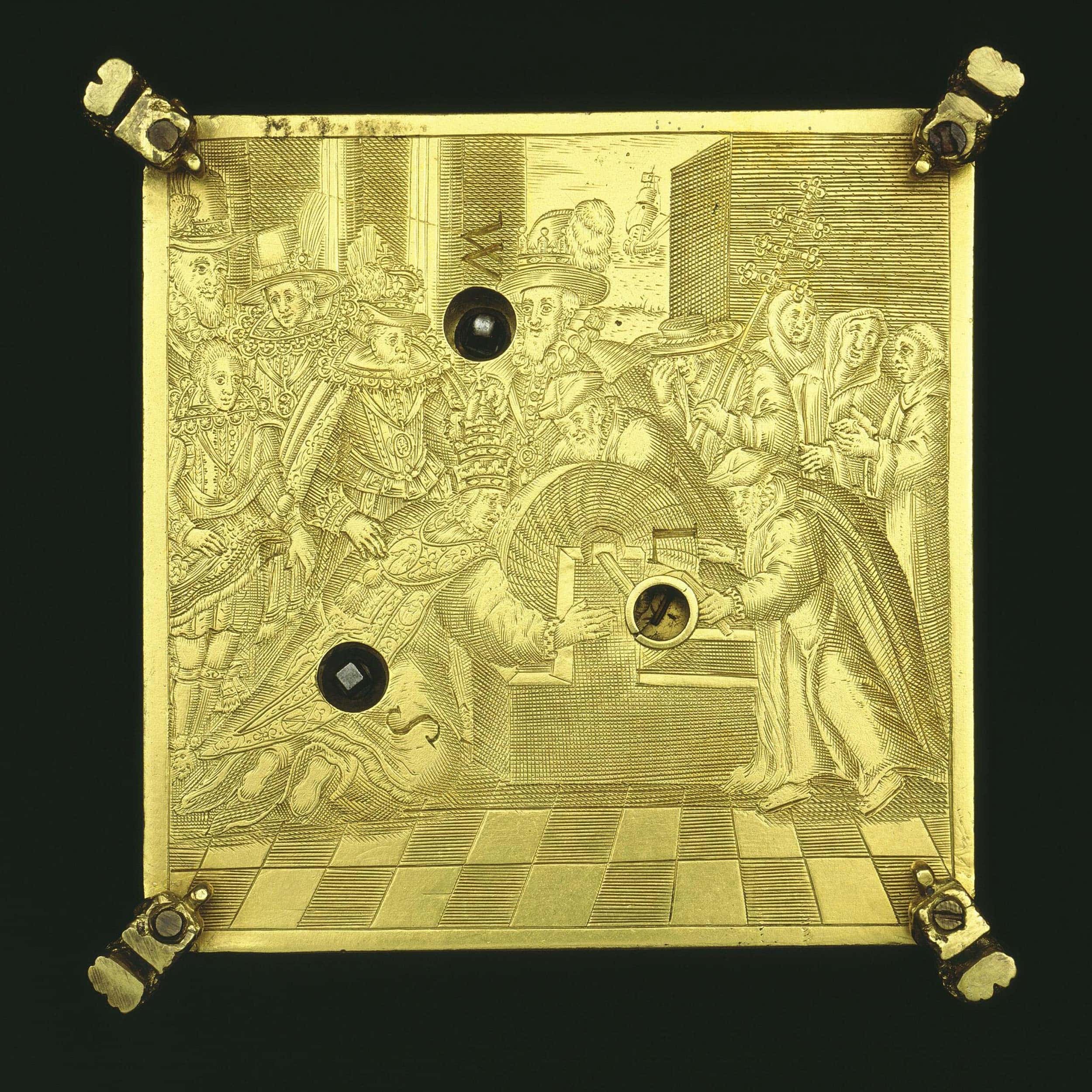
On the bottom is an engraved scene exhibiting James I, along with his two sons Henry and Charles, holding the Pope’s nostril to a grindstone. On the precise a Cardinal and three friars view the proceedings with dismay. The scene is taken from a German engraving and was impressed by the settlement made in 1609 between Spain and the Estates Basic of the Netherlands. The settlement was considered an ideal blow to papal energy because it was an alliance between a Roman Catholic and a Protestant state. The clock should have been made shortly afterwards, when the difficulty was nonetheless topical.
A Grasp by Royal Appointment
In 1613, Queen Elizabeth I died, and King James VI of Scotland grew to become King James I of England. King James I used to be a big determine in British historical past, born on the 19th of June 1566, and have become King of Scotland in 1567, following the abdication of his mom, Mary, Queen of Scots. He ascended to the English throne, uniting the crowns of England and Scotland.
The King summoned Ramsay again from France and supplied him two coveted positions within the royal family: Groom to the Privy Chamber and Web page to the Bedchamber. Ramsay was additionally tasked with the accountability of caring for the King’s clocks and watches, successfully turning into the Royal Clockmaker. His joint royal remuneration was £250 each year – in at the moment’s cash £52,000 – not dangerous for a 28-year-old watchmaker from Fife!

As Keeper of all His Majesty’s Clocks and Watches, and subsequently Clockmaker Extraordinary in 1613, Ramsay was a particularly influential member of the Royal Family. He used this to his profit, however regardless of buying and selling in London, he typically signed his actions ‘David Ramsay Scotus’, in all probability to point out his Royal allegiance.
As a member of the King’s Privy Council, he discovered himself on the very coronary heart of energy in London and had the personal ear of the King; he was in a much more influential place than of the individual merely tending to the King’s clocks and watches.
London by the 1620s was a thriving and necessary centre for the craft of watch and clockmaking and Ramsay continued as Royal Clockmaker below King Charles I. Ramsay was named within the Clockmakers Constitution, granted by Charles I, and was appointed as the primary Grasp of the Worshipful Firm of Clockmakers.
The Worshipful Firm of Clockmakers is without doubt one of the historic Livery Corporations of the Metropolis of London, based in 1631. This organisation was established to supervise the craft and commerce of clock and watchmaking, guaranteeing high quality requirements, regulating apprenticeships, and defending the pursuits of its members. The corporate has performed a big function within the growth and development of horology in England and past.
Ramsay’s Best Horological Masterpieces
David Ramsay was commissioned round 1618 to make an distinctive astrological watch – a mechanical marvel and murals unto itself. It was so advanced that it rivals many trendy complication watches with its look and variety of indications. Sometimes for its time, it was made to be worn as an decoration, on a sequence across the waist or neck.
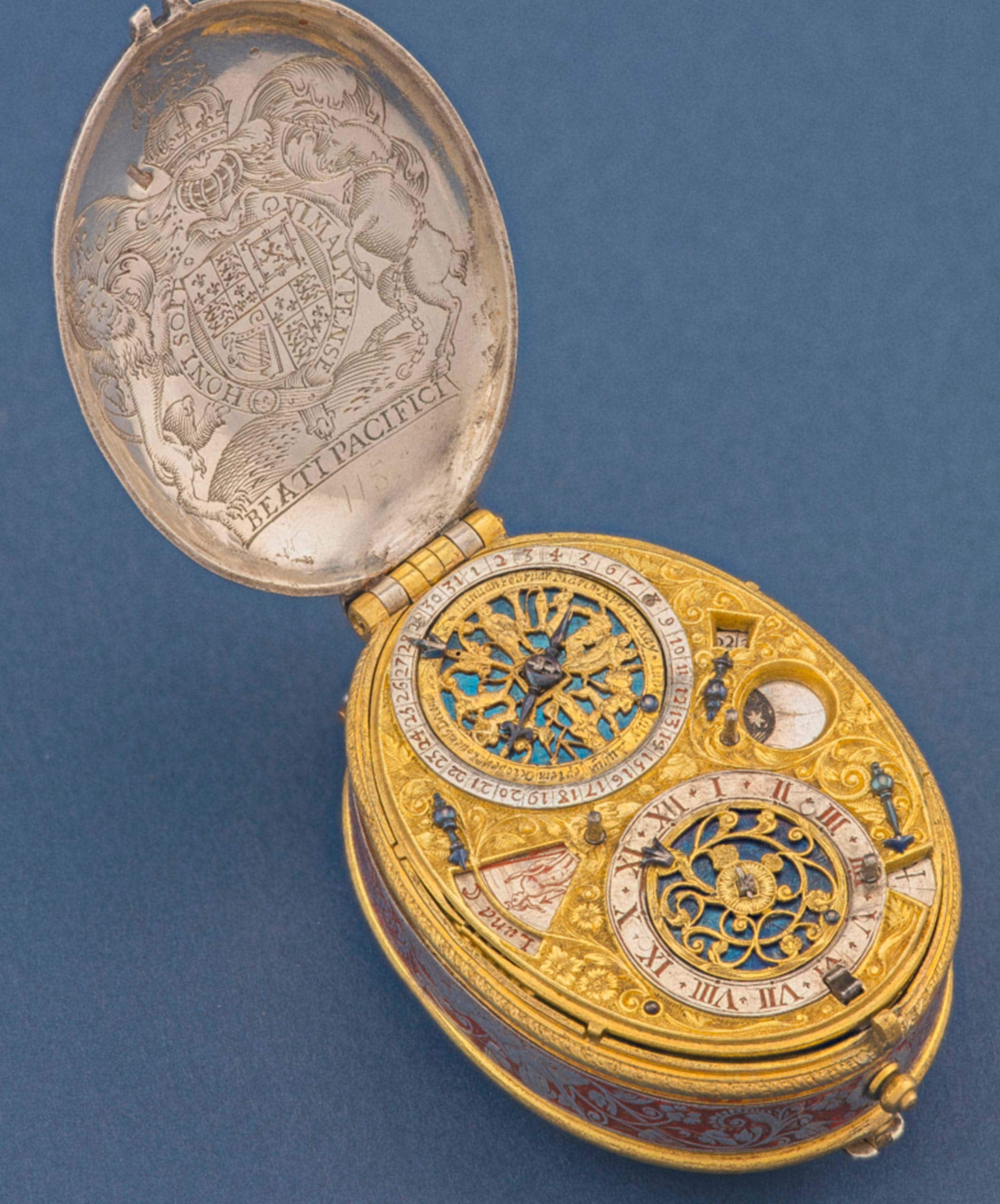
It was extraordinarily costly, and the inclusion of King James VI and I’s royal portrait and motto signifies that it was most probably commissioned by the King himself, who was additionally Ramsay’s royal patron.
On its dial face, the watch offers seven indications for
- Time of day
- Annual calendar
- Signal of the zodiac
- Day of the week
- Lunar section
- Lunar date
- Ruling planet
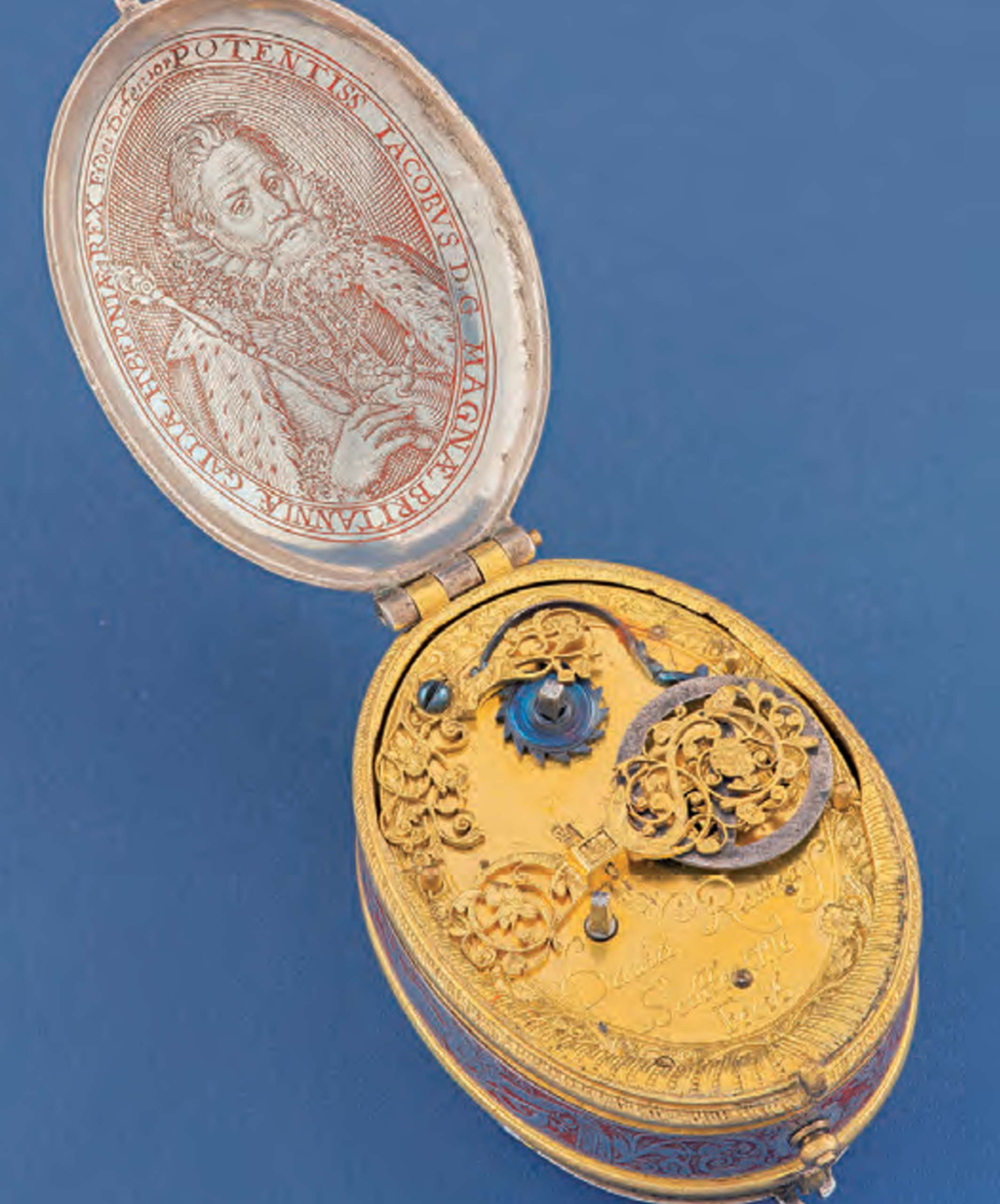
Every of the underlying mechanisms was engineered utilizing advanced arithmetic to get the a number of gears to work collectively. Occupying the highest and backside halves of the dial face are two giant dials: the annual calendar disc on prime, and the time dial on the underside.
The silver prime and backside are engraved with scenes from Ovid, however their inside faces have King James I’s coat of arms and a portrait of the King himself. The silver case band with pink detailing has Chronos along with his scythe and St James below his solar hat between floral branches.
The motion exhibits the hour, the day – signal, title and deity, the month – title and date along with the signal of the Zodiac, the age and section of the moon, and the planet hour – helpful in astrology. The motion is manufactured from gilt and spaced by elegant pierced Egyptian pillars. The watch is signed ‘David Ramsay Scotte Me Fecit’.
I had the honour to be within the presence of this extraordinary watch, and close-up it’s much more fantastic than it seems to be within the images. The craftmanship is astonishing notably given the truth that it’s over 400 years outdated. It offered at public sale for greater than £1 million (together with charges) in December 2015, which was four-times its pre-sale excessive estimate of £250k.
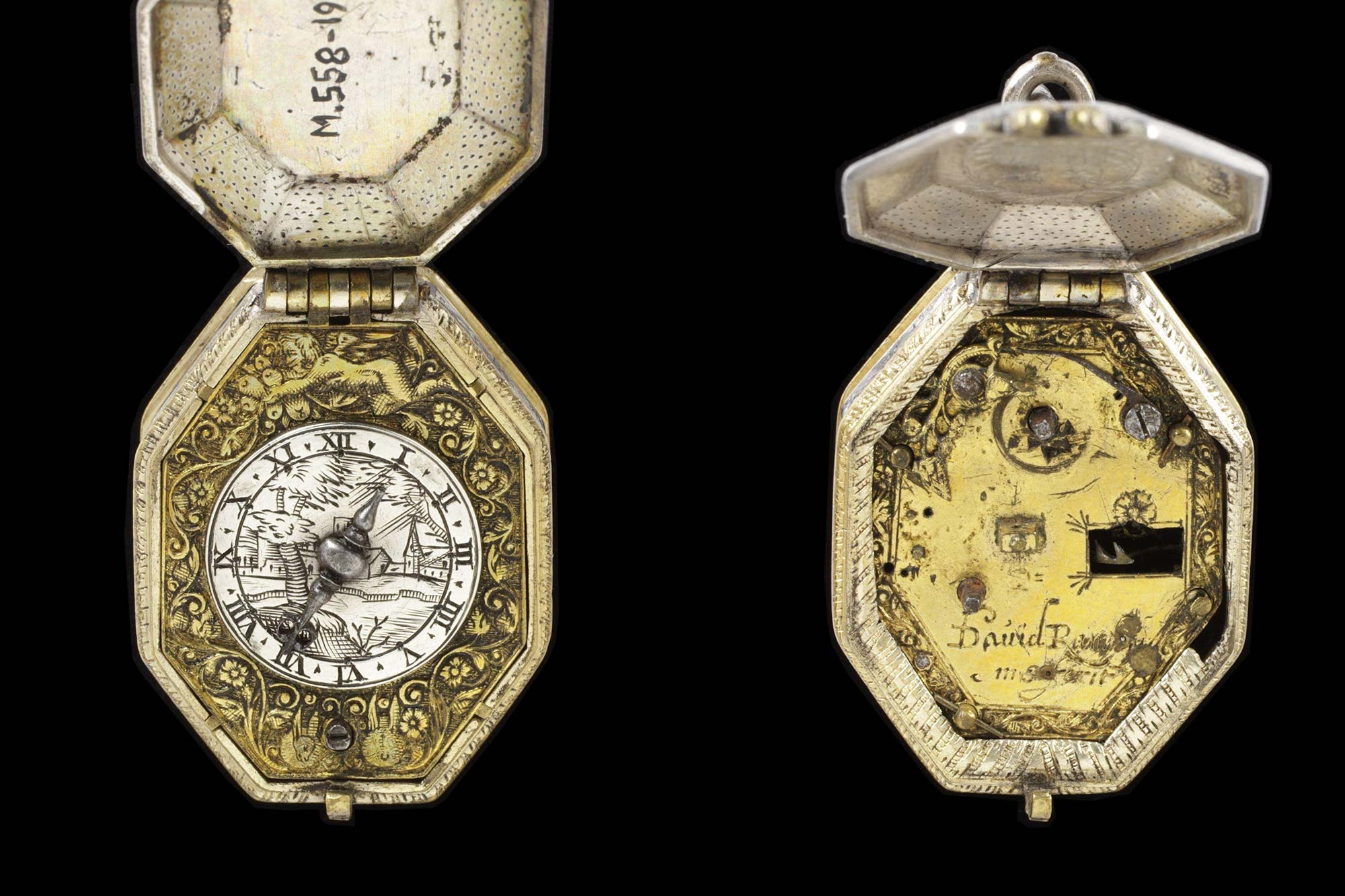
Given his privileged place, Ramsay acquired commissions from the ‘nice and the great’ of society. This fantastically adorned small silver and gilt brass watch was maybe made for a Girl on the Courtroom of King James in c.1615. It’s engraved with the Annunciation and the Nativity, with the motion is signed ‘David Ramsay me fecit’, in all probability made in London. Right now watches had been for the very rich and it will have been worn on a sequence across the neck as a standing image.
A key side of working a 17th century watch and clockmaking enterprise was to journey to the continent to fulfill with trusted suppliers, focus on necessities, see the most recent fashions, and reinforce the private connections that may enable Ramsay to make sure he might provide high quality objects to his rich and exacting purchasers.
This silver watch within the form of a six-pointed star was made by David Ramsay in c.1625. The silver case is engraved with scenes of the nativity on all surfaces. The silver dial has an engraved centre, whereas the six factors of the star have representations of angels of which that above XII holds a defend bearing the legend ‘de Heck Sculp’ (sculpted by de Heck). The fusee motion has a verge escapement, pinned-on steadiness cock and ratchet wheel set-up. It’s signed ‘David Ramsay, Scotus me fecit’.
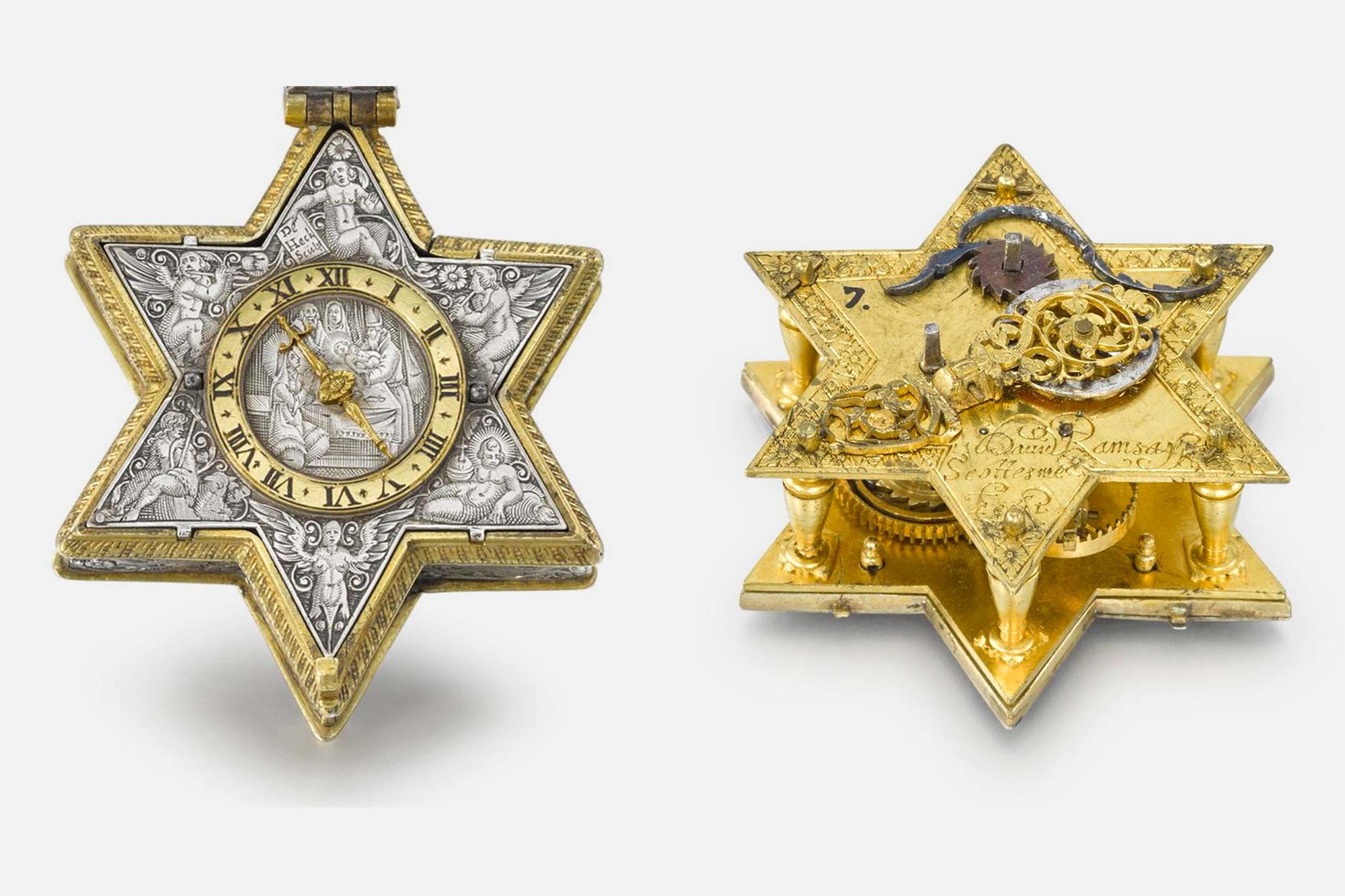
This watch was hid for a few years behind a tapestry at Gawdy Corridor, Norfolk and solely found in round 1790. In consequence, it’s in outstanding situation. The phrases ‘de Heck Sculp’ on the dial in all probability consult with Gérard de Heck of Blois, energetic from 1608 – 1629.
Did the six-pointed star form have any spiritual significance? As intriguing as this can be, we’ll by no means know why it was made within the form of the modern-day ‘Star of David’!
Ramsay was an distinctive motion maker and designer, however the manufacturing of his timepieces was depending on a number of skilled craftsmen for engraving and enamelling. We have now seen that two of his most interesting timepieces confirmed the abilities of grasp engraver Gérard de Heck from the French metropolis of Blois – a centre of expertise for creating intricately designed timepieces within the 17th century.
Gérard de Heck was a traditionally important watchmaker and was a part of a broader European custom of expert craftsmen who contributed to the event of horology throughout a interval of great development in timekeeping know-how.
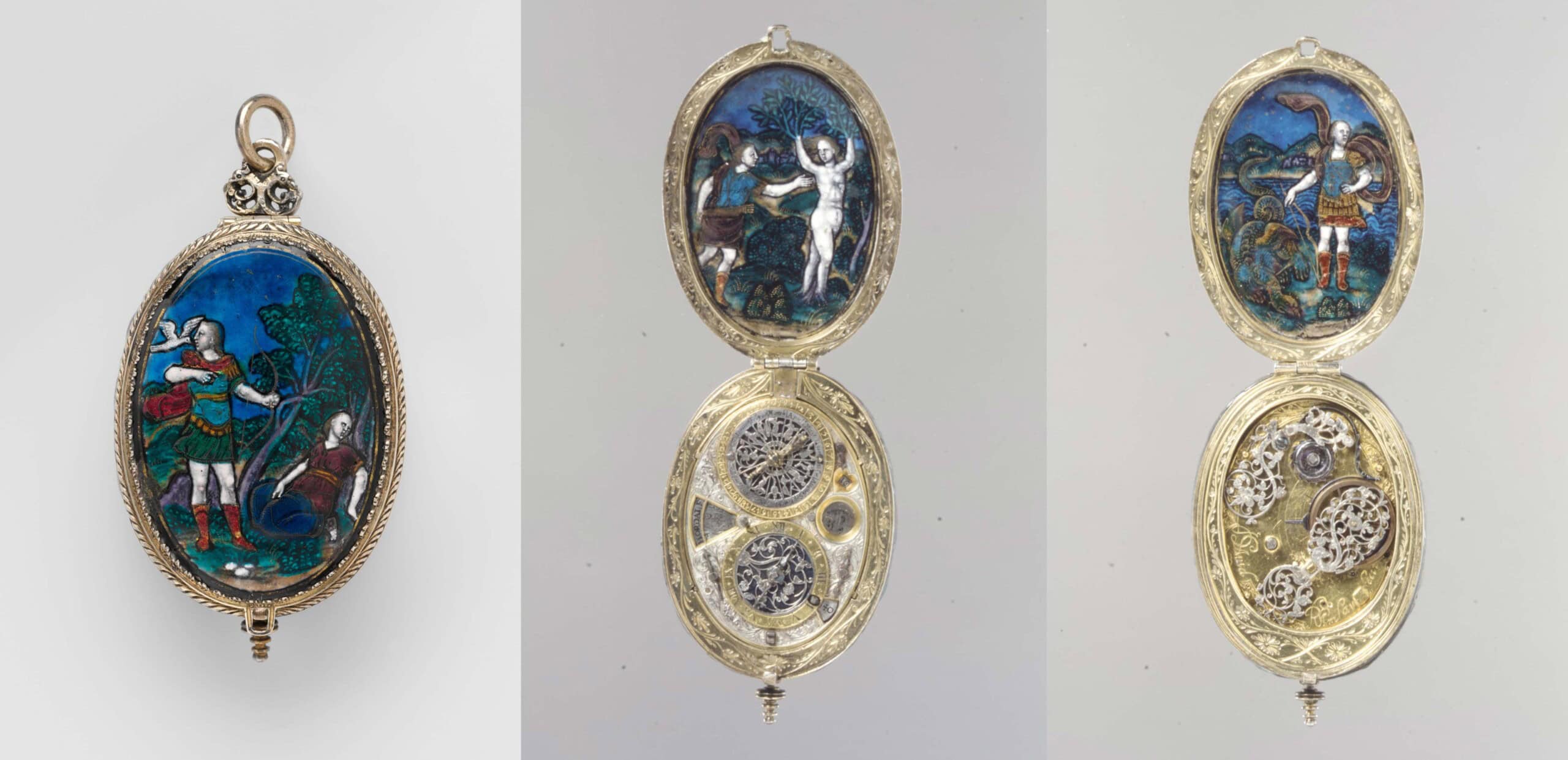
This beautiful watch by Ramsay was made in c.1620 and is profusely adorned with lovely polychrome painted enamels. The enamel plaques are initialled I.R. which might be for Jean Reymond who was energetic between 1615-1632. Reymond was a notable French watchmaker and is recognised for his contributions to the craft of horology, notably within the area of Limoges, which was additionally identified for ornamental enamel work.
Reymond’s watches typically featured elaborate and detailed enamel designs, making them each purposeful timepieces and artworks. These watches had been extremely valued not just for their timekeeping capabilities but additionally as luxurious objects and symbols of standing.
An Inauspicious Finish
Whereas Ramsay had been a favorite of King James I, after his demise in 1625, he by no means loved the identical stage of confidence with King Charles I. When Charles grew to become King, he inherited his father’s Privy Council, together with Ramsay. Nevertheless, with the execution of King Charles I on the 30th of January 1649, the London clock commerce was hit by a deep recession. Ramsay’s workshop slowly ran out of labor, and his patrons and clients went elsewhere.
With out Charles’ safety, Ramsay was jailed within the Gatehouse Jail for debtors. He spent 4 years in jail. After the defeat of the King, Oliver Cromwell, the chief of the brand new Commonwealth, requested Ramsay to confide in whom the King had given items and to assist him monitor down any of the King’s possessions. Cromwell requested for Ramsay’s assist in order that he might repossess these ‘items’ and lift cash for a brand new state. In change, he supplied a fee to repay his money owed and get out of jail, which meant that he deserted his loyalty to his earlier royal employer by taking on Cromwell’s provide. By 1653, Ramsay was dwelling in Holborn, London, and in 1659, he died as a pauper, forsaking his spouse Sarah and their son William.
Ramsay had an enchanting and sometimes precarious life proper on the centre of energy, serving two consecutive kings and dwelling via a Civil Struggle led by the Commonwealth’s Lord Protector, Cromwell. Regardless of these tumultuous occasions, he managed to supply a number of the most interesting, most advanced watches the world has ever seen.
David Ramsay’s general contribution to the craft of watchmaking and clockmaking is remembered as an necessary chapter within the historical past of horology, marking him as one of many key figures within the early growth of exact timekeeping devices.
Fittingly, Ramsay signed most of his work ‘Scotus me fecit’ which interprets to ‘Scotland made me’.
Trending Merchandise




